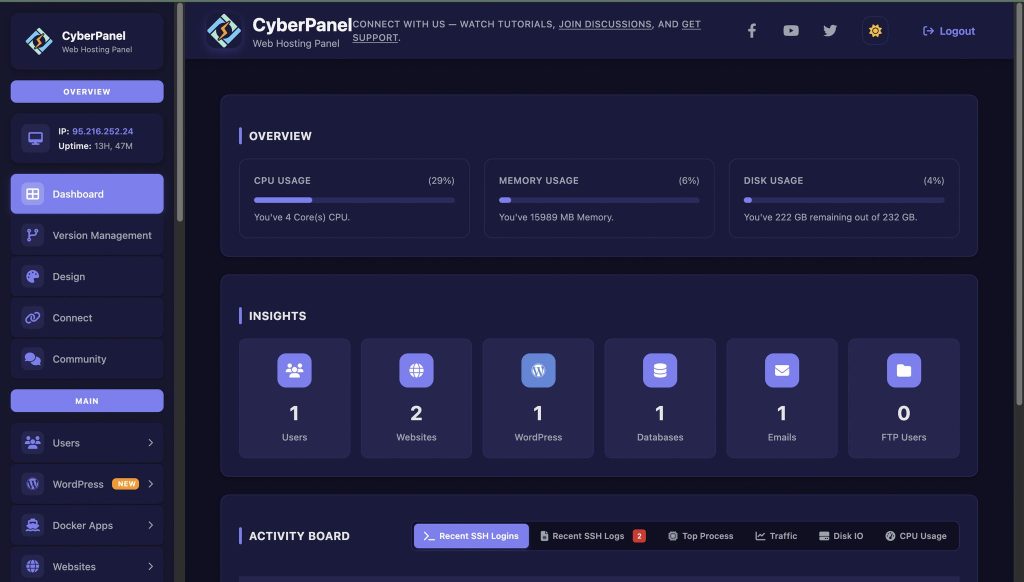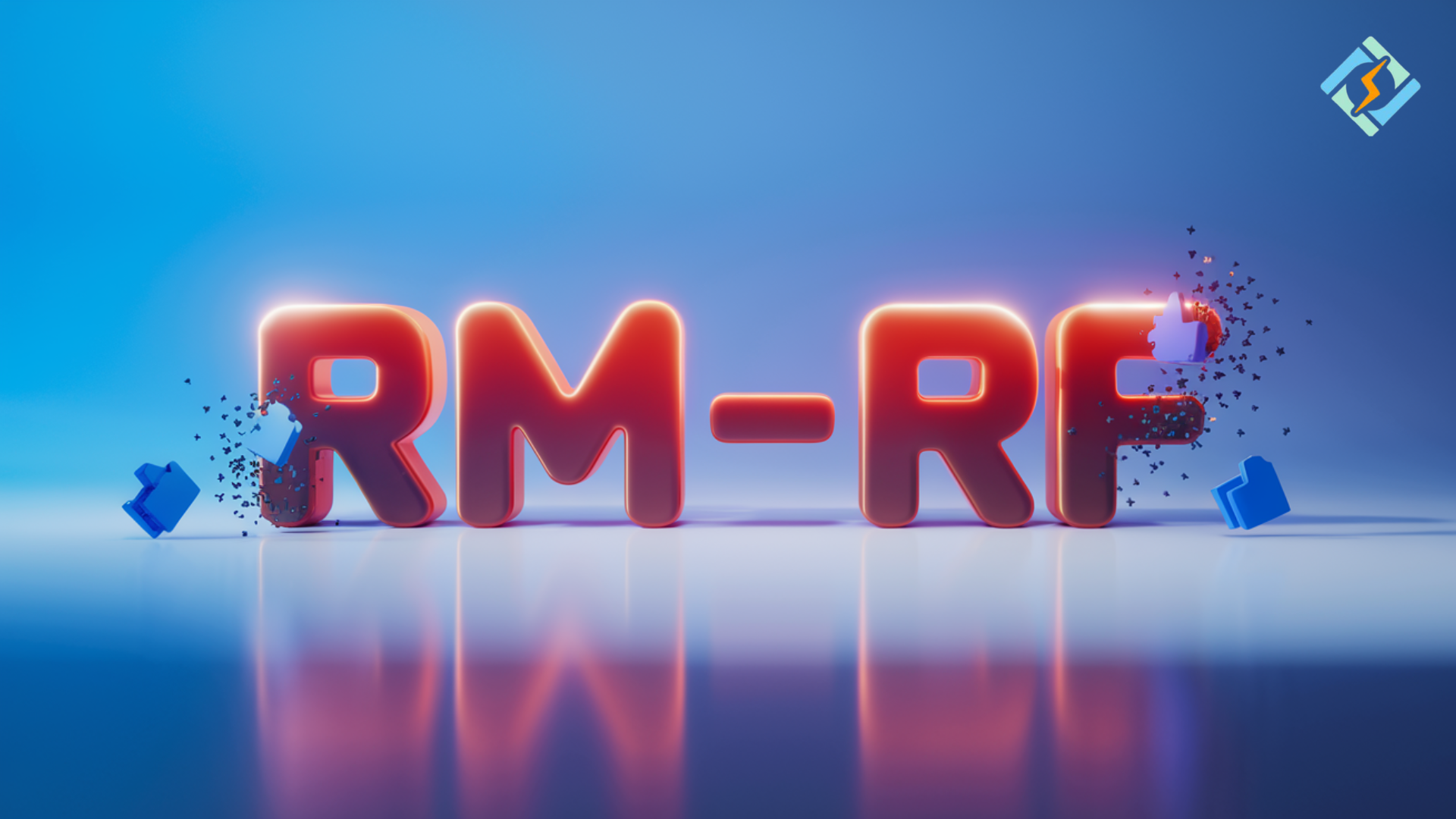The rm rf command in Linux is definitely among the top powerful and hazardous commands you can execute on your system. System administrators and developers commonly employ it to delete files, directories, and entire file systems with just a few clicks of time. However, what separates this command from the others is that it does not relocate deleted items to a recycle bin, but rather it removes them permanently.
A lot of new users usually just type the command without being fully aware of what it does and as a result, they will end up losing data unintentionally. To be more precise, one misuse of the rm -rf command in Linux can erase important system files and make the operating system unbootable. Therefore, it is very necessary for one to know how the command functions, the correct ways of usage and the available alternatives.
This tutorial is a detailed explanation of:
- The rm rf command function.
- The distinction between {rm, rm -r, rm -rf} commands in Linux.
- Examples with outputs.
- Safety measures and best practices.
- The position of CyberPanel in proper file management without facing any trouble.
At the end, you will be able to decide the right moments to use this command and when is better not to.
What is rm rf Command in Linux?
The rm rf command in Linux removes files and directories recursively without asking for confirmation.
- rm → removes files.
- -r → stands for recursive, which deletes directories and their contents.
- -f → stands for force, which skips confirmation prompts.
When combined as rm -rf command in Linux, it means delete everything under the given path without warnings.
Get exclusive access to all things tech-savvy, and be the first to receive
the latest updates directly in your inbox.
Examples of rm-rf Command in Linux
| Command | Action | Risk Level |
|---|---|---|
rm -rf myfolder/ | Deletes folder “myfolder” and all contents | Low (if path is correct) |
rm -rf * | Deletes all files in the current directory | Medium |
rm -rf / | Deletes entire filesystem | Extreme |
rm -rf ~/Documents/ | Deletes user documents permanently | High |
What is the Differnce Between rm, rm -r, and rm -rf Command in Linux?
| Command | Description | Example |
|---|---|---|
rm file.txt | Deletes a single file. | rm test.txt |
rm -r folder/ | Deletes a folder and its contents recursively. | rm -r myfolder/ |
rm -rf folder/ | Deletes folder, subfolders, and files forcefully without confirmation. | rm -rf project/ |
How rm -rf Command in Linux Work?
This is the command which you have to write:
rm -rf myfolder/
Linux does the following:
- Recursively scans the folder.
- Forcefully deletes each file inside.
- Removes subdirectories without asking.
- Deletes the parent folder at the end.
Output:
$ rm -rf myfolder/
$ ls
# (No output — folder is gone permanently)
Why rm -rf Command in Linux is Dangerous?
It is dangerous because:
- t bypasses trash/recycle bin.
- It removes files permanently.
- It can delete system directories like
/etc/or/bin/, making Linux unusable.
Worst Case Example:
rm -rf /
Safe Usage Example of rm -rf:
# Remove a temporary log directory
rm -rf /var/log/temp-logs/
This command is safe because:
- Path is clearly specified.
- The directory is not critical.
- It runs by a user with limited permissions.
How to Use rm -rf Command in Linux Safely?
You can follow these practices to use rm rf command in Linux safely:
- You should double-check paths before hitting enter.
- You should use absolute paths instead of relatives ones.
- You must run
lsfirst to verify the directory contents. - You should test with echo:
echo rm -rf /home/user/docs/
- You should use aliases in
.bashrcto add a safety prompt:
alias rm="rm -i"
What are the Alternatives to rm rf command in Linux?
Here are a few alternatives to rm rf command:
1. Interactive Deletions with Built-In Flags
Use safer flags to add prompts and reduce risk:

# Prompt for each deletion
rm -i filename
# Prompt once if deleting multiple files or directories
rm -I *.txt
- The
-iflag prompts before every removal; - The
-Iflag prompts once for large or recursive deletes.
2. Use Tarsh-cli
You can send files to the trash instead of deleting outright:
# Using trash-cli
trash-put file.txt
# Using gtrash (supports TUI and restoration)
gtrash put file.txt
trash-climoves files to~/.local/share/Trash;gtrashoffers a modern text UI and uses system trash spec.
3. Rip (Rm Improved)
A safer alternative that moves files to a recoverable “graveyard”:
# Install gas needed, then safe delete
rip filename
rip --seance pattern
4. Secure Deletion Tools
It is best for sensitive data. You cna overwrite file data before removal to prevent recovery:
# Using shred to overwrite and delete
shred -zvu -n 3 sensitive.txt
# Secure wipe of directory
wipe -rfi folder/
Tools like secure-delete (e.g., srm, sfill) offer secure wiping options.
Why These Alternatives Matter:
| Alternative | Use Case | Benefit |
|---|---|---|
| Interactive flags | Everyday file deletion | Adds confirmation layer |
| Trash CLI tools | Safer deletion with recovery | Undo mistakes easily |
rip | Easy file recovery | Graveyard system, revertible |
| Secure deletion | Handling sensitive or confidential data | Ensures no recovery |
| Disk sanitization | Whole drive cleanup | Proper secure erasure |
Role of CyberPanel in File Management

CyberPanel is an open-source web hosting control panel powered by OpenLiteSpeed. When you manage servers through CyberPanel, you will not need to use rm -rf manually. Because, it provides you with a GUI file manager where you can:
- Delete files and folders securely.
- Restore from backups if mistakes happen.
- Avoid accidental server-wide deletions.
This makes CyberPanel a safer alternative for beginners and hosting providers.
People Also Ask
How can I recover a mistakenly deleted directory after using rm -rf?
If you have no snapshort or backup, then recovery is difficult. You can try file-recovery tools like ext4magic or testdisk, but the chance of success drops quickly if data gets overwritten.
Can I prevent rm -rf from removing important system files?
Yes, you can prevent. You can set the immutable attribute to protect files or directories. Use sudo chattr +i filename to block deletion, even if someone runs rm -rf. To remove the protection, use sudo chattr -i filename.
What if I run rm -rf on a directory that is a mounted network share?
By doing so, you risk deleting files from the network share. If the share is mapped locally, rm -rf acts just like on a local folder. So, you have to be extra cautious and ensure you’re pointing to the correct path.
Can I protect files from accidental rm -rf deletion?
Yes, you can use saftey tools. These include rm-protection, safe-rm, aliases like rm -i, or immutable file attributes (with chattr +i).
Wrapping Up!
To sum up, rm rf command in Linux is a powerful yet dangerous tool. Because it can delete entire directories instantly. You should use this command when you really need it. For a safe file management, you should prefer alternatives. You can also use CyberPanel’s file manager for routine file handling.
Master Linux Safely, Do practice commands in a test environment before use!



